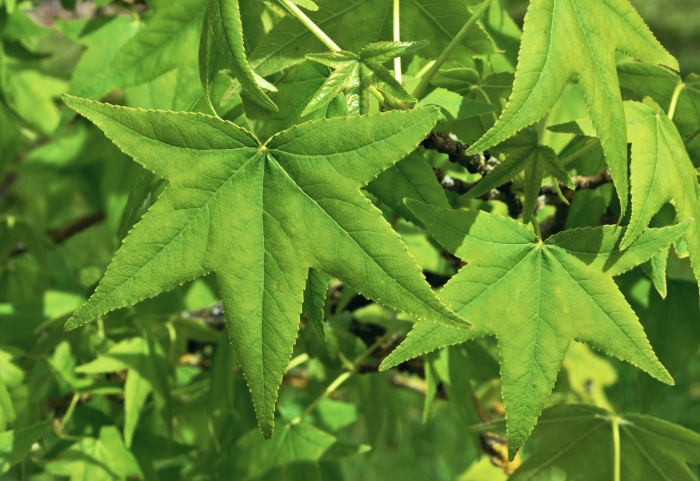Sweetgum
(Liquidambar styraciflua)
Sweetgum (Liquidambar styraciflua)
/
/

JLPC
CC BY-SA 3.0




















































































Estimated Native Range
Summary
Sweetgum thrives in moist, acidic loam or clay soils and is often found alongside species like willow oak and sweetbay magnolia. It has moderate salt tolerance and does not perform well in shade. For optimal growth, it requires full sun and can adapt to various drainage conditions. While it is a popular ornamental tree, the spiny fruits can be a nuisance in landscaped areas, and its aggressive root system may cause problems near pavements or foundations. It is less commonly used for timber due to the interlocked grain of the wood.CC BY-SA 4.0
Plant Description
- Plant Type: Tree
- Height: 60-80 feet
- Width: 40-60 feet
- Growth Rate: Rapid
- Flower Color: N/A
- Flowering Season: Spring
- Leaf Retention: Deciduous
Growth Requirements
- Sun: Full Sun
- Water: Medium
- Drainage: Fast, Medium, Slow
Common Uses
Bee Garden, Bird Garden, Deer Resistant, Drought Tolerant, Fire Resistant, Fragrant, Rabbit Resistant, Salt Tolerant, Street Planting
Natural Habitat
Moist, lowland areas, along streams, and in mixed hardwood forests across the Southeastern U.S., and parts of Central America
Other Names
Common Names: Alligator-Wood, Satin-Walnut, American-Storax, Red-Gum, Sweet-Gum, Amerikanischer Amberbaum, Liquidambra D’America, Amerikaanse Amberboom, Ambraträd, American Sweet Gum
Scientific Names: , Liquidambar styraciflua, Liquidambar macrophylla, Liquidambar styraciflua var. mexicana, Liquidambar styraciflua f. rotundiloba, Liquidambar styraciflua f. pendula, Liquidambar barbata, Liquidambar gummifera, Liquidambar styraciflua var. macrophylla,
GBIF Accepted Name: Liquidambar styraciflua L.